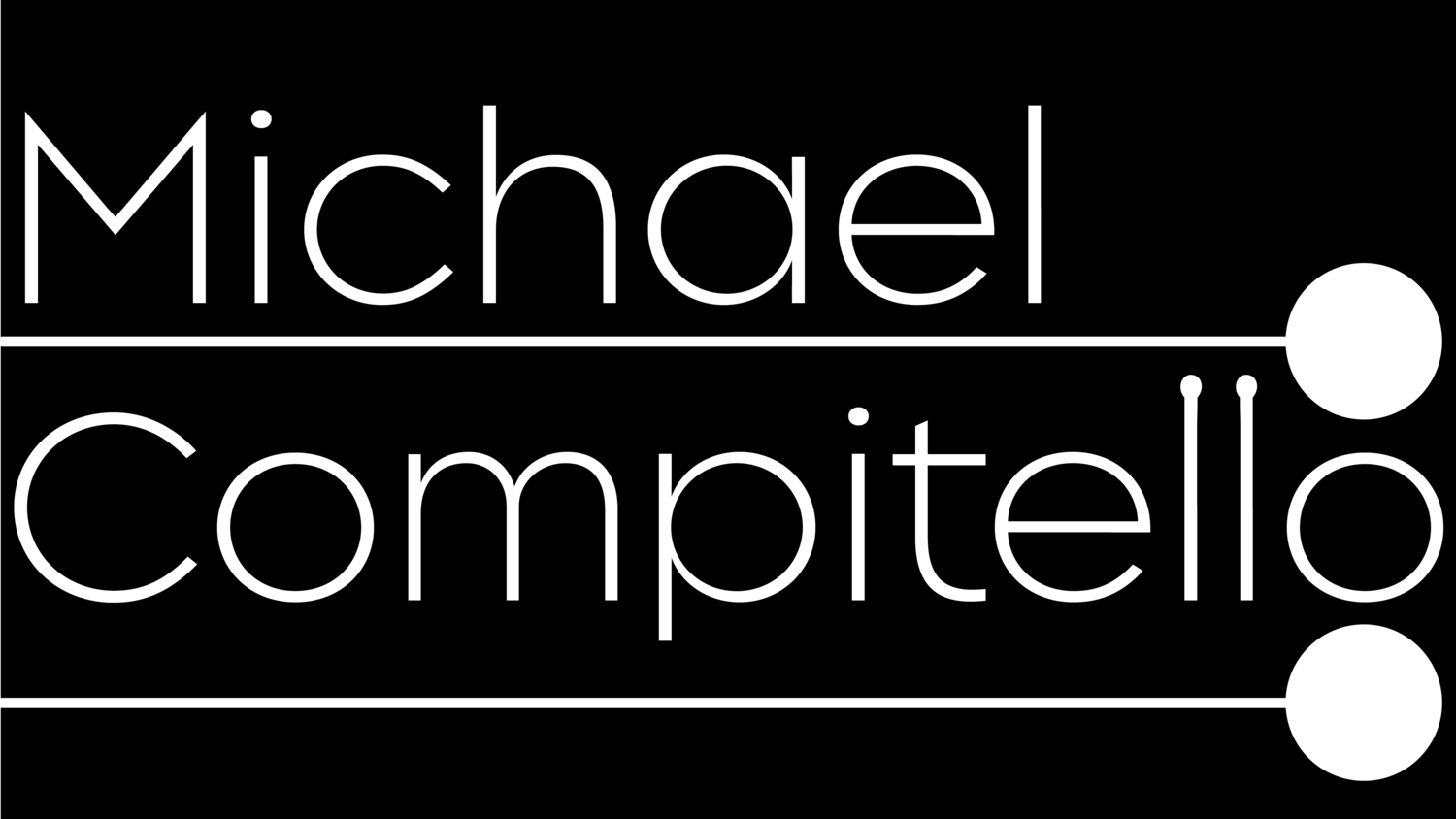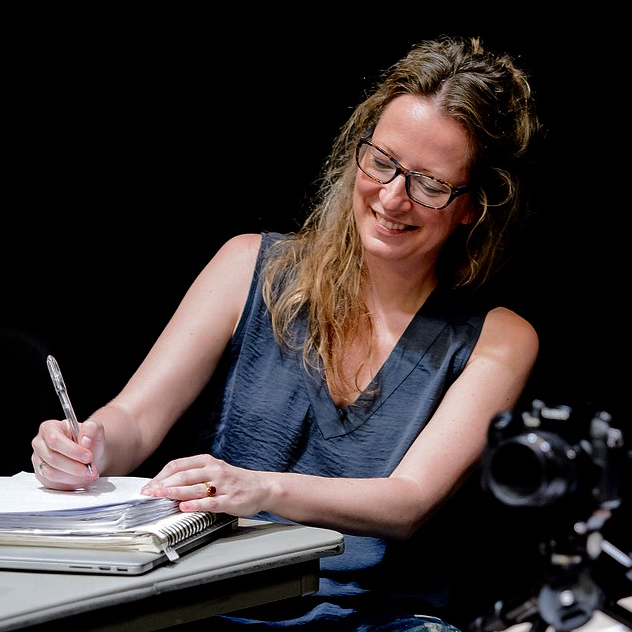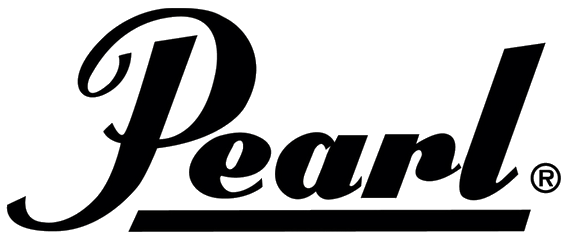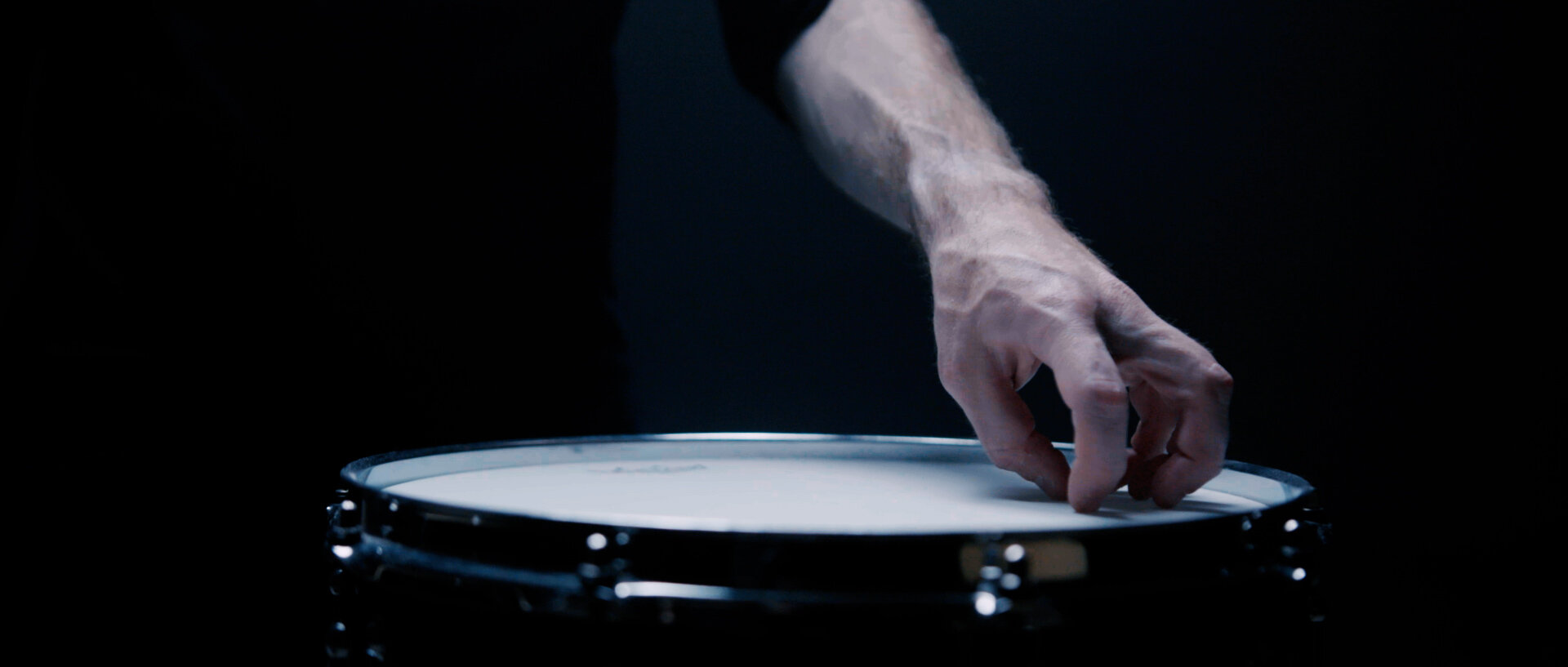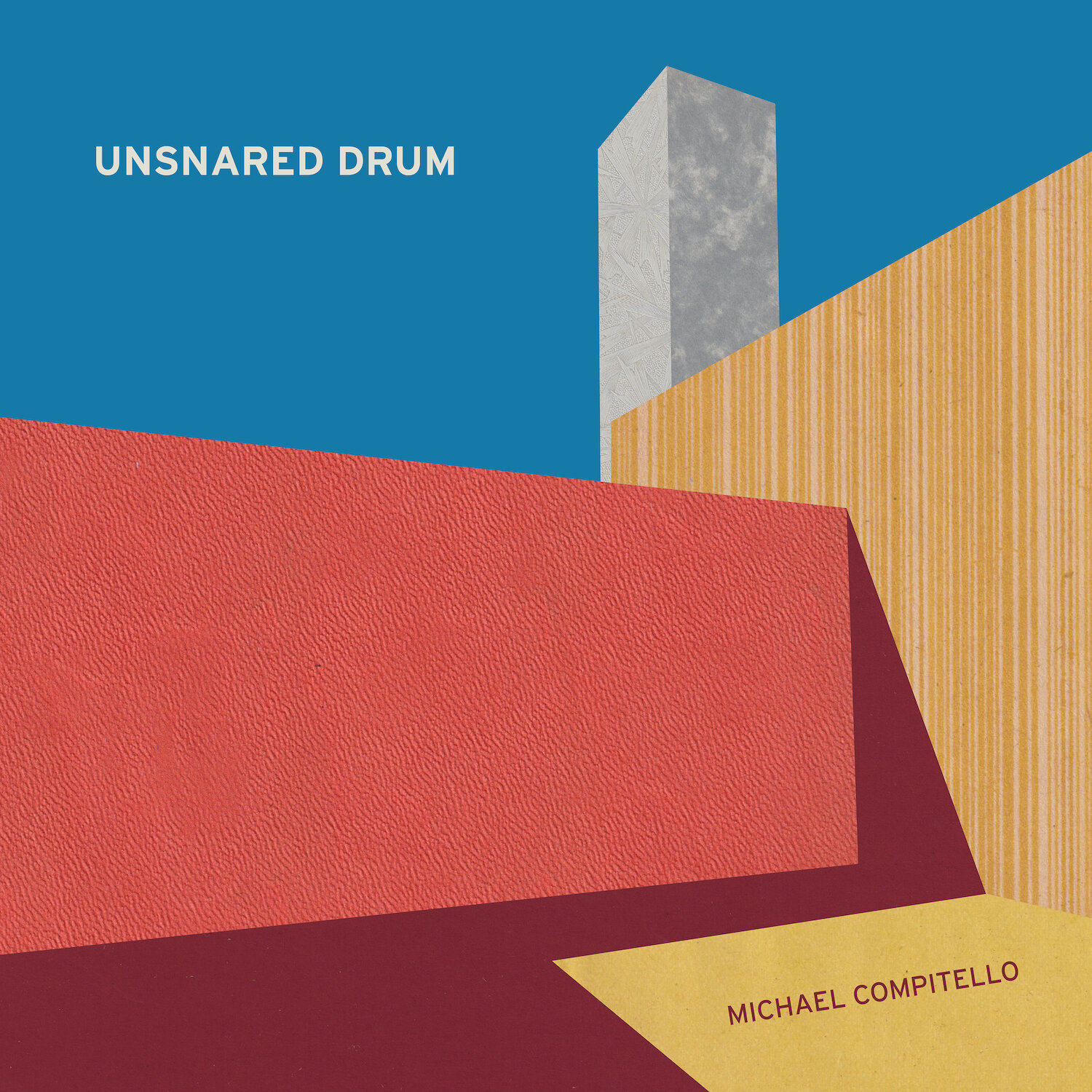
UNSNARED DRUM
I’m excited to unveil my debut solo album Unsnared Drum, featuring new works for snare drum from Nina Young, Hannah Lash, Amy Beth Kirsten, and Tonia Ko. Our mission was to rethink the snare drum, to ask whether the instrument could be bold, coy, suave, and elegant: in short, interesting. Each composer lived with a drum and a number of implements over an extended period of time, and the result is a collection of pieces which highlight the snare drum’s breadth of sonic possibility and depth of expressivity, revealing an instrument of drama, grace, and heart.
After three years of workshops, performances, and presentations, Unsnared Drum is out now on New Focus Recordings.
Project Videos
About the Project
Who
How (Process)
Because Unsnared Drum seeks to highlight the dynamic dialogue between performer and composer within the collaborative process, I have chosen four composers whose music I love and whose friendship I value. I’ve premiered, commissioned, and performed new solo and chamber works from Hannah, Amy, Tonia, and Nina, and Unsnared Drum will be a fantastic opportunity to bring these dynamic relationships to an instrument that needs their unique voices and curiosity towards sound, theater and space. This collaborative project highlights the idiomatic, historical, and timbral context for the instrument while incubating ideas over an extended time frame, resulting in a significant addition to the snare drum’s repertoire.
Thanks to Vic Firth and Pearl Percussion, each of the composers had an assortment of sticks, mallets, and other implements with which to experiment as they wrote. I’m also grateful for the support of Pearl Drums, whose drums the composers used in their experimentations.
Play the Pieces!
All four pieces are available for purchase and performance:
Album Release Events
So excited for this event. Join us for a pre-release celebration of Unsnared Drum, August 15 at Tenri Cultural Institute.
I’ll perform the music on the album (the pieces’ NY premiere), joined for some special surprises by percussionist Mike Truesdell.
We will have Physical and Digital copies available for sale.
Doors open at 4:30 with music at 5, followed by a reception.
Free, but registration is recommended due to capacity limits. Pre-order a copy with your event registration!
See below for ticket information.
Project Updates
Booklet
I thought I’d share the booklet essay I wrote for the album:
What does it mean to Unsnare something? To free an instrument from expectation? The instrument is called the snare drum because of the wires underneath it; the metal, gut, or cable which give the drum a crisp, focused, energetic, and loud snap. In addition to its militaristic pedigree, the snare drum functions often as a timekeeper, offers coloristic effect, and is a technical proving ground for percussionists. What does a performer do with an instrument which has such a seemingly narrow role? To me, the drum’s repertoire seemed a beautiful courtyard: wondrous and fertile, but ultimately constrained by walls of our own making.
Unsnared Drum reframes how people think about, perform, and practice the snare drum, freeing the drum from its historical and idiomatic chains. It asks whether the snare drum can be bold, coy, suave, and elegant: in short, interesting. To that end, over the past four years, Nina Young, Hannah Lash, Amy Beth Kirsten, and Tonia Ko have patiently collaborated with me on surprising and inventive new works for solo snare drum. I sent each composer a drum and a collection of sticks, mallets, and other implements, and they investigated my favorite instrument from the ground up. The result is a collection of pieces which highlight the snare drum’s breadth of sonic possibility and depth of expressivity, revealing an instrument of drama, grace, and heart.
Nina Young’s Heart.throb inverts our conception of percussive virtuosity with sly wit. In the piece, the characteristics most associated with percussive skill (quick, crisp, fleet passagework) are largely confined to the rim of the drum rather than the head and muddied by electronic delay. Nina affixes a transducer to the head of the drum, turning the instrument into a speaker which broadcasts a pulsating and undulating bed of sinusoids. The performer acts as a filter, altering the pitch and resonance of the instrument by pressing and stirring mallets into the head, striking at various positions on the instrument’s rim, and, in the piece’s emotional center, effecting a stunning duet between a vocalise created by hand pressure on the drum and a stiff metal brush rubbed against the rim. An electronic swoop signals that adventure awaits, and the back half of Heart.throb is pure dance party, with an increasingly pulsating drum set against faster and faster passagework on the drum’s rim and head. The drum fights back, and by the end, the throbbing, urgent, enveloping texture can only be defeated by a powerful and muscular cadenza.
Crisp, precise, dynamic, sharp, and uncompromising, Hannah Lash’s Start challenges the performer to begin again constantly. Start is based on a handful of sharp motives which are continuously, obsessively, monomaniacally, tenaciously, and explosively developed. The performer highlights these themes with (hopefully) dynamic élan, abetted by an array of implements (brushes, hands, metal and wood chopsticks) whose colors delineate formal sections. For Hannah, the features of the snare drum’s sound which make it so challenging to play—its brutally unforgiving sound, its sharp focus—are also pathways to highlight touch, finesse, and subtlety. Start never relaxes, and the piece’s jagged silences are gradually eliminated in pursuit of a breathless climax.
Where Start uses timbre to elucidate motive, Amy Beth Kirsten’s Ghost in the Machine turns to color to reveal the true soul of the instrument. Like a modernist chef mobilizing myriad advanced techniques (and plenty of silverware) in pursuit of the “essence” of a flavor, Ghost in the Machine calls upon the performer to use a number of implements to chase the “pure” sound of the snare drum, that ghost so often caught in the machinery of rigid, militaristic music. In addition to a triangle set on the head and jangled with finger or mallet to sound like a groaning electric guitar, Amy deploys popping, echoing, clicking, clacking, jangling, buzzing, and dinging sounds in an increasingly dense groove, sautéing, sous vide-ing, and foaming the drum with shot glasses, knitting needles, and a wide assortment of sticks and mallets. The result is a graceful and pure declaration of the snare drum’s inner sound.
Unsnared Drum concludes with Tonia Ko’s Negative Magic, which discovers an all-but-hidden realm of melody, harmony, and resonance by almost completely loosening the drum’s tuning. After an acclimating ritual which calls to mind an ancient storyteller finding their voice, we hear a meandering conversation between the clattering shell of the drum and the ringing head and a series of melodious sonic waterfalls which emulate the same vertiginous acceleration, transforming from curious to sinister. Directly in the center of the piece, the snares are activated, and the music repeats, buzzing with new life as sharp accents are juxtaposed against a tremulous texture. By the end, the performer gradually loosens the snares until they are deactivated again, unspooling Negative Magic’s rhythmic process. The only sound possible is the head itself, scratched by nails. The drum dissolves into air, escaping the beautiful garden’s walls.
“The drum reveals the drummer.” Nina’s program note for Heart.throb could aptly describe all of Unsnared Drum. Each of these works subverts our expectations of what the snare drum can do. More importantly, our workshop sessions, notational experiments, and sonic adventures challenged me to rethink what a percussionist can be, asking me to develop and refine new expressive pathways and percussive techniques while freeing me from rigid expectation and dogma. In the end, it is the performer—not the instrument—who is freed.
-Michael Compitello
Unboxing
Had a great time exploring Laura Grey and Molly Haig’s incredible design for the physical disc. Can’t wait to share these with the world!
June 2021
Just back from recording video for all the pieces on Unsnared Drum with Four/Ten Media. Big thanks to Evan and Kevin, and to Icebox Project Space for the killer location. PC Evan and Kevin.
PASIC 2019
It’s been so long since I penned an update. Too much doing, too little reflecting; too much preparing and not enough publicizing. While I am excited about recent projects (Robert Honstein’s Lost and Found, Matthew Barnson’s new album, Thomas Kotcheff’s new piece for NMC) and upcoming ideations, Unsnared Drum has taken center stage.
This weekend, I’m bringing our little snare drum project to the biggest percussion gathering in the world. PASIC is loud in every sense of the word, and I’m really excited to bring these four fantastically innovative works to our percussion community.
Julia Breitberg has designed a killer program (check out this COVER):
Designed by Julia Breitberg
I wrote a preview article for PAS Rhythm Scene, And I’ve written some program notes, which I’m sharing below. See you there, and stay tuned for more info about upcoming UD shows.
About Unsnared Drum
Unsnared Drum is a project dedicated to pushing the limit of what is possible with the snare drum. Over the past two years, four of America’s most esteemed and dynamic composers—Nina C. Young, Hannah Lash, Tonia Ko, and Amy Beth Kirsten—have collaborated with me on new works for solo snare drum. We chose the title because our mission was to reframe how people think about, perform, and practice the snare drum; to free the drum from its historical and idiomatic chains while challenging the the instrument’s capacity for subtle and refined expression.
The center of my artistic practice is incubating and catalyzing new work, working over extended time frames with composers and artists I admire and whose friendship I value. To a large extent, Unsnared Drum is as much about process and community building (the natural extension of musical collaboration) as it is new music. In addition to loving Amy, Tonia, Nina, and Hannah’s music, I’m fortunate to have worked frequently with them, and had a feeling that our friendship and previous working experience would engender a dynamic and creative collaboration. I sent each composer a drum and a selection of implements, and we spent years workshopping ideas.
Amy, Nina, Hannah, and Tonia certainly have wonderfully unique compositional voices. Their music is united, however, by their craft, curiosity towards sound, theater and space, and willingness to create new practices and techniques to serve dramatic purposes. Although none had written for solo snare drum, they all write boldly and creatively for percussion in other solo, chamber, and large ensemble contexts. While Unsnared Drum’s throughline is our collaborative efforts—workshop sessions, notational experiments, sonic adventures—each of the works explores a unique element of the snare drum’s personality.
Nina Young’s Heart.throb inverts our conception of what constitutes percussive skill in an ear-opening exploration of the snare drum’s unsung melodic and harmonic capacity. Fitting the drum with a transducer and a contact microphone, Nina broadcasts beating sinusoids through the instrument, creating an undulating bed of sound. By pressing into the head and exploring different locations on the rim, the performer filters these tones to create singing melodies and rich harmonies. Throughout the piece, the musical characteristics most associated with percussive virtuosity—fast, fleet stickings—are confined to the rim and re-contextualized as triggers for the work’s harmonic movement.
Virtuosic, rhythmically alive, and uncompromising, Hannah Lash’s music draws upon a rich harmonic palette and a clarity of form, blending melodic nuance with relentless rhythmicity. Start is based on a handful of sharp, polythmic motives which are continuously, obsessively, tenaciously, and explosively developed. Interested in how the timbre might elucidate a monomaniacal, motivically-oriented piece, Hannah uses many implements (brushes, hands, chopsticks, and metal beaters in addition to sticks) to help delineate formal guideposts amid a steady barrage of attacks.
Amy Kirsten’s work is full of melodic invention, otherworldly sounds and hypnotic rhythms. A composer, director, singer, writer, and visual artist who highlights the theater present in music performance, she uses percussion with stunning creativity, often used as integral parts of large-scale staged works. For her Ghost in the Machine, Amy and I found a ghosty language of sounds—a hidden snare language—manipulating the tautness of the snare head, preparing the drum with a variety of accessories, and striking the instrument using different kinds of sticks and mallets. Amy deploys these colors in an alluring, colorful groove.
Tonia Ko’s music has an incredible ability to create inventive and deeply expressive moments which link inspiration, form, content, and performance practice. She invents new techniques which emerge organically from the physical gestures and textures associated with playing instruments. In her Negative Magic, Tonia reimagines the snare drum, revealing a world of harmonic and timbral complexity on the drum by loosening control—literally. By tuning each tension rod of the drum to a slightly different (but very low) pitch, Tonia is able to create chords, or multiplicities of pitches within different areas of the drumhead. After gradually becomes attenuated to the complexity of the drum’s sound through a series of seamless, hyper-nuanced sonic adventures: a ritualistic introduction which explores the drum’s pitch range; a quirky conversation between the head and a combination of dryer sounds from the rim, lug casings, and shell; a series of sonic waterfalls, where pitch descents are coupled with transitions from dry to wet timbre; and a series of explosions where extraordinarily loose snare wires jangle amidst a burst of accents.
I started this project with the goal of reinventing the snare drum, and I couldn’t have asked for more interesting and inspiring results. Interesting is too weak a word, because these works stretch my musicianship, challenge my assumptions, and drive me to open my ears and develop my technique in ways I could have never imagined. Each work treats the drum as a valid medium of musical expression, worthy of our time and energy. These pieces are full of wit, sass, vitality, and gravity: they expand the melodic and harmonic profile of this instrument, and they do so with a grace and honesty that belies their rigor. I’m honored to present them.
-Michael Compitello
Summer 2019
After the premiere of her Heart.Throb in February in Lawrence, Nina Young and I sat down to discuss the origins of her piece, and how she approached writing for the instrument. Take a look, and keep watching this space for news about recording.
